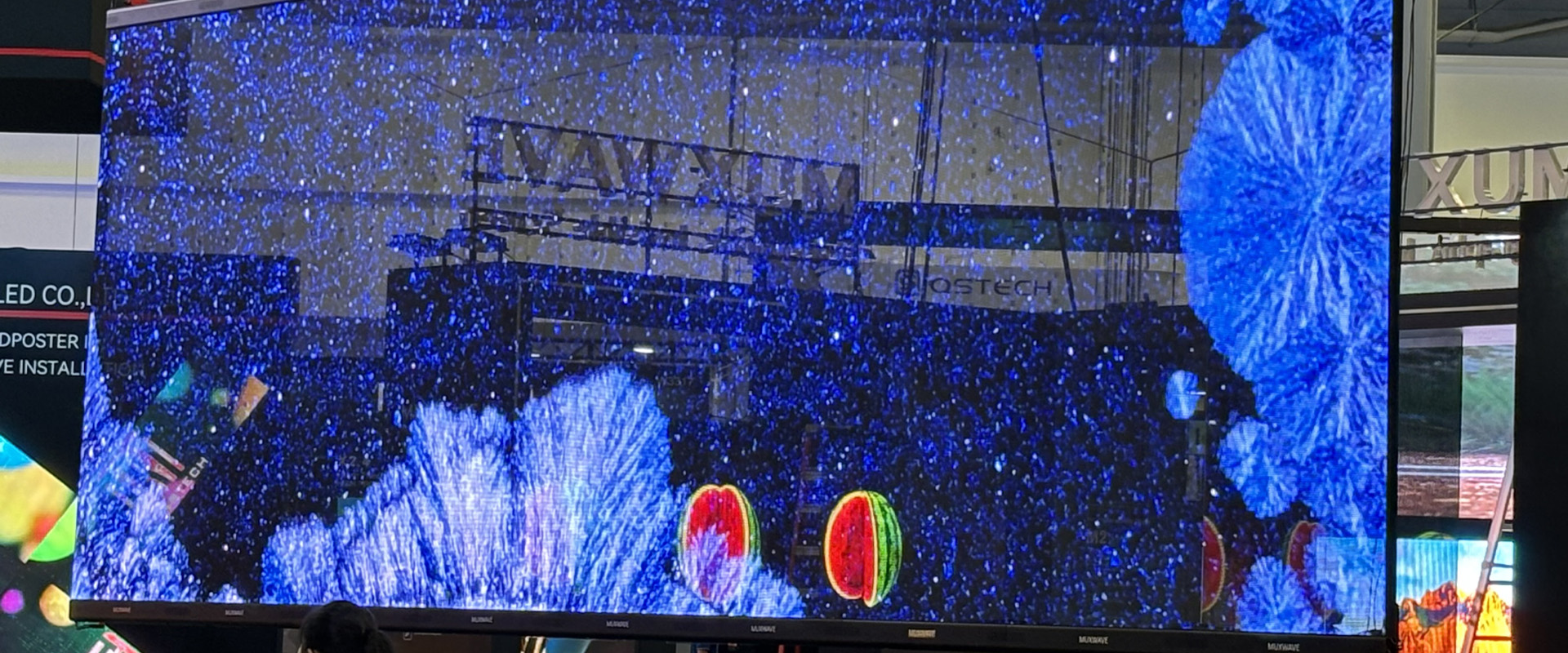1. Introduction
Transparent LED screen face challenges in maintaining display clarity due to their high transparency. Achieving high definition without compromising transparency is a significant technical hurdle.
2. Addressing Gray Scale Reduction When Lowering Brightness
Indoor LED display and outdoor LED display have different brightness requirements. When transparent LED screen are used as indoor LED screen, the brightness needs to be reduced to avoid eye discomfort. However, lowering brightness results in gray scale loss, affecting image quality. Higher gray scale levels result in richer colors and more detailed images. The solution for maintaining gray scale when reducing brightness is using fine pitch transparent LED screen that automatically adjust brightness according to the environment. This prevents impacts from overly bright or dark surroundings and ensures normal image quality. Currently, gray scale levels can reach 16-bit.

3. Managing Increased Defective Pixels Due to Higher Definition
Higher definition in transparent LED screen requires more densely packed LED light per module, increasing the risk of defective pixels. Small pitch transparent LED display are prone to defective pixels. The acceptable dead pixel rate for LED screen panel is within 0.03%, but this rate is insufficient for fine pitch transparent LED display. For instance, a P2 fine pitch LED display has 250,000 LED light per square meter. Assuming a screen area of 4 square meters, the number of dead pixels would be 250,000 * 0.03% * 4 = 300, significantly affecting the viewing experience. Solutions to reduce defective pixels include ensuring proper soldering of LED light, following standardized quality control procedures, and conducting a 72-hour aging test before shipment.
4. Handling Heat Issues from Close Viewing
LED screen convert electrical energy into light, with an electrical-to-optical conversion efficiency of around 20-30%. The remaining 70-80% of the energy is dissipated as heat, causing significant heating. This challenges the manufacturing and design capabilities of transparent LED screen manufacturer, requiring efficient heat dissipation designs. Solutions for excessive heating in transparent LED video wall include using high-quality, high-efficiency power supplies to reduce heat and using external cooling methods, such as air conditioning and fans, for indoor environments.
5. Customization vs. Standardization
Transparent LED screen, due to their unique structure and transparency, are well-suited for non-standard applications like glass curtain walls and creative displays. Customized transparent LED screen currently account for about 60% of the market. However, customization poses challenges, including longer production cycles and higher costs. Additionally, side-emitting LED light used in transparent displays are not standardized, leading to poor consistency and stability. High maintenance costs also hinder the development of transparent LED screen. Standardizing production and service processes is essential for the future, allowing more standardized transparent screen to enter non-specialized application fields.
6. Considerations for Brightness Selection in Transparent LED Screen
6.1 Indoor Application Environments
For environments like corporate showrooms, hotel lobbies, mall atriums, and elevators, where the brightness is relatively low, the brightness of transparent LED display should be between 1000-2000cd/㎡.
6.2 Semi-Outdoor Shaded Environments
For environments like car showrooms, mall windows, and glass curtain walls of business departments, the brightness should be between 2500-4000cd/㎡.
6.3 Outdoor Environments
In bright sunlight, low-brightness LED window display may appear blurry. The brightness of transparent wall should be between 4500-5500cd/㎡.
Despite the current achievements, transparent LED screen still face significant technical challenges. Let’s look forward to further advancements in this field.

7. Achieving Energy Efficiency and Environmental Protection in Transparent LED Screen
Transparent LED screen manufacturer have made significant improvements in power consumption by using high-efficiency LED light chip and high-efficiency power supplies, enhancing power conversion efficiency. Well-designed panel heat dissipation reduces fan power consumption, and scientifically designed circuit schemes reduce internal circuit power consumption. Outdoor transparent LED panel can automatically adjust brightness according to the external environment, achieving better energy savings.
High-quality transparent LED screen use energy-efficient materials. However, large display areas still consume considerable power, especially outdoor transparent LED screen, which require high brightness and long operating hours. Energy efficiency is a critical issue for all transparent LED screen manufacturer. While current transparent LED display cannot yet compete with some high-end common cathode energy-saving traditional displays, ongoing research and development aim to overcome this challenge. See-through LED screen are not yet fully energy-efficient, but it is believed they will achieve this in the near future.
8. Conclusion
Transparent LED screen have rapidly developed and become a new force in the commercial LED display sector, playing an essential role in the segmented LED display market. Recently, the industry has shifted from rapid growth to competition over market share, with manufacturers competing to increase demand and growth rates.
For transparent LED screen company, increasing investment in technology and innovation and refining products according to market needs is crucial. This will accelerate the expansion of transparent LED screen into more application fields.
Notably, transparent LED film, with its high transparency, lightweight, flexibility, smaller pixel pitch, and other advantages, is gaining attention in more application markets. RTLED has launched related products, which have already started to be used in the market. LED film screen are widely regarded as the next development trend. Contac us to learn more!
Post time: Aug-02-2024


